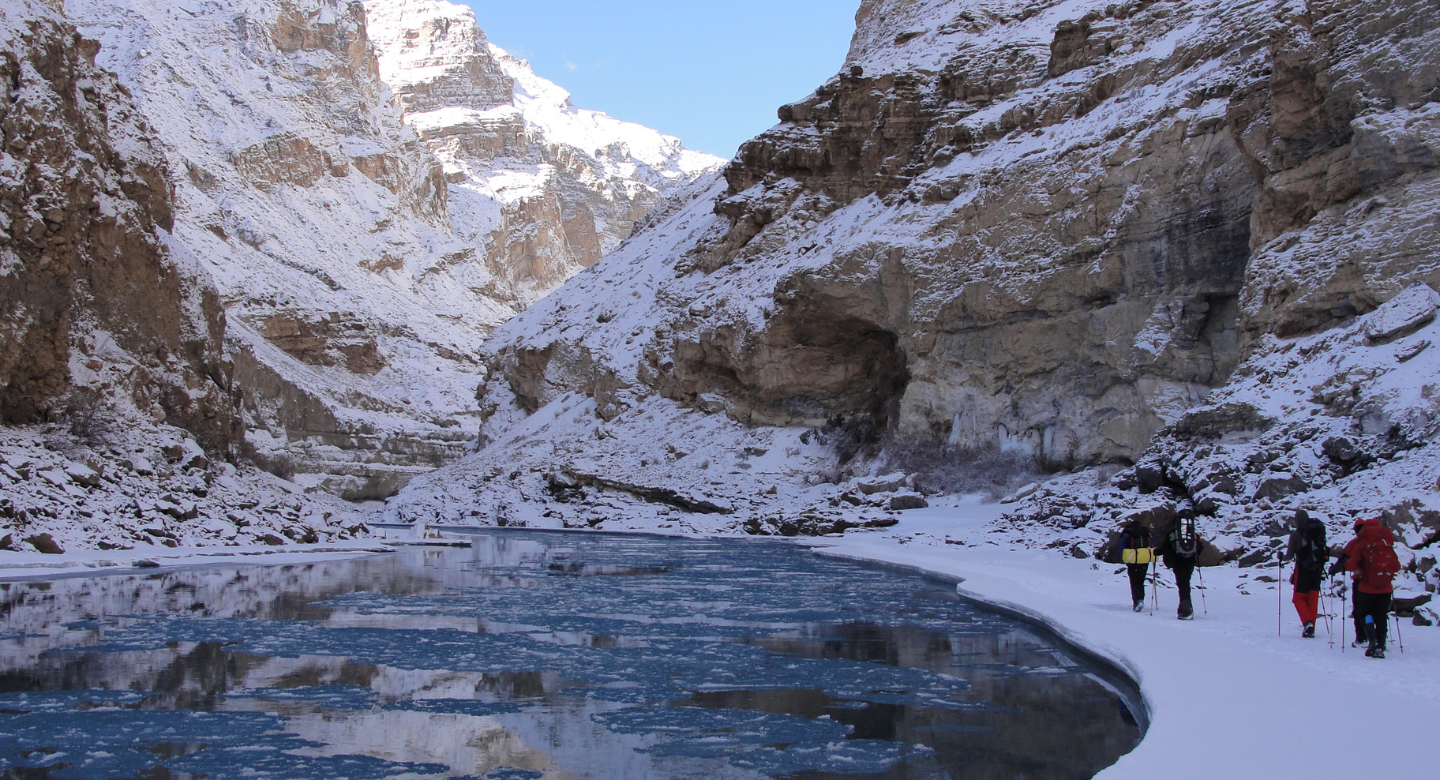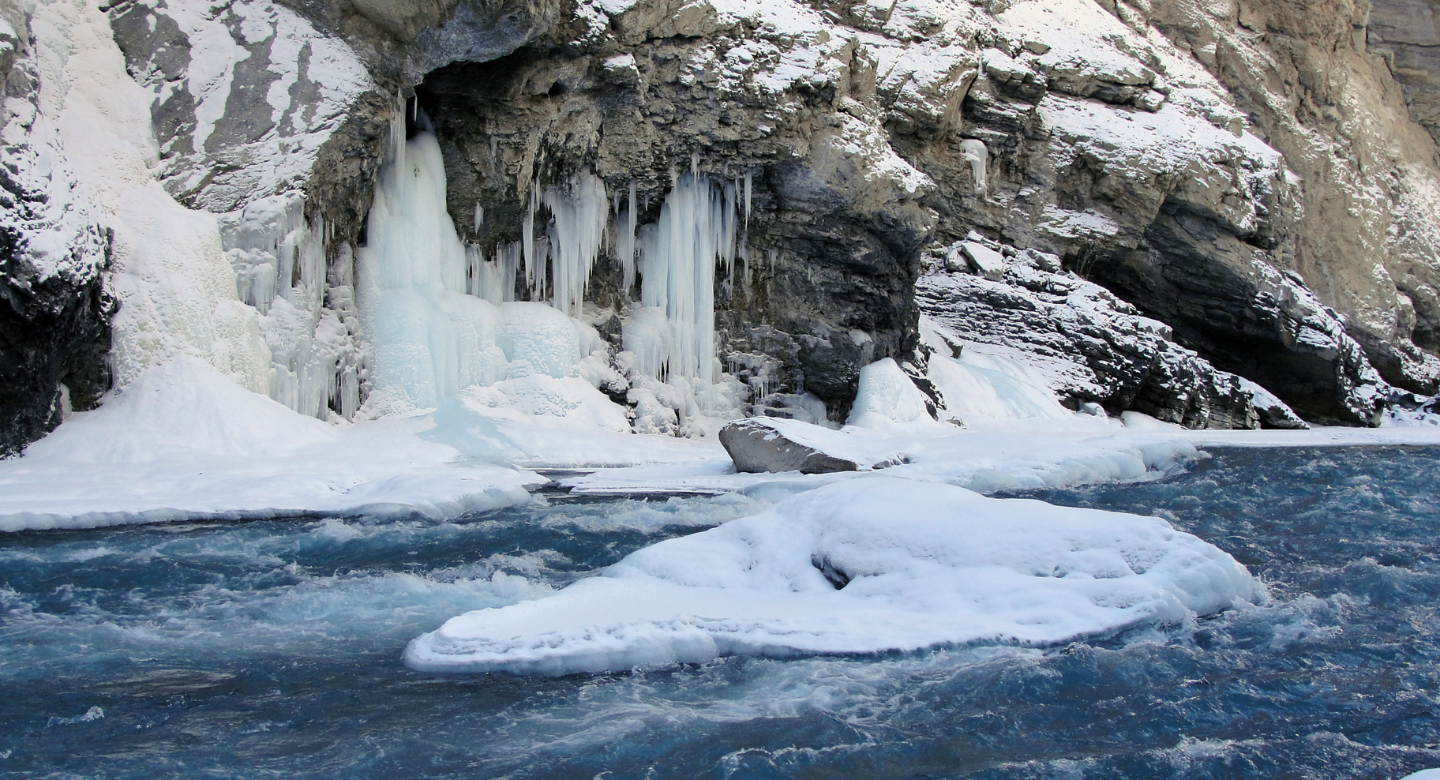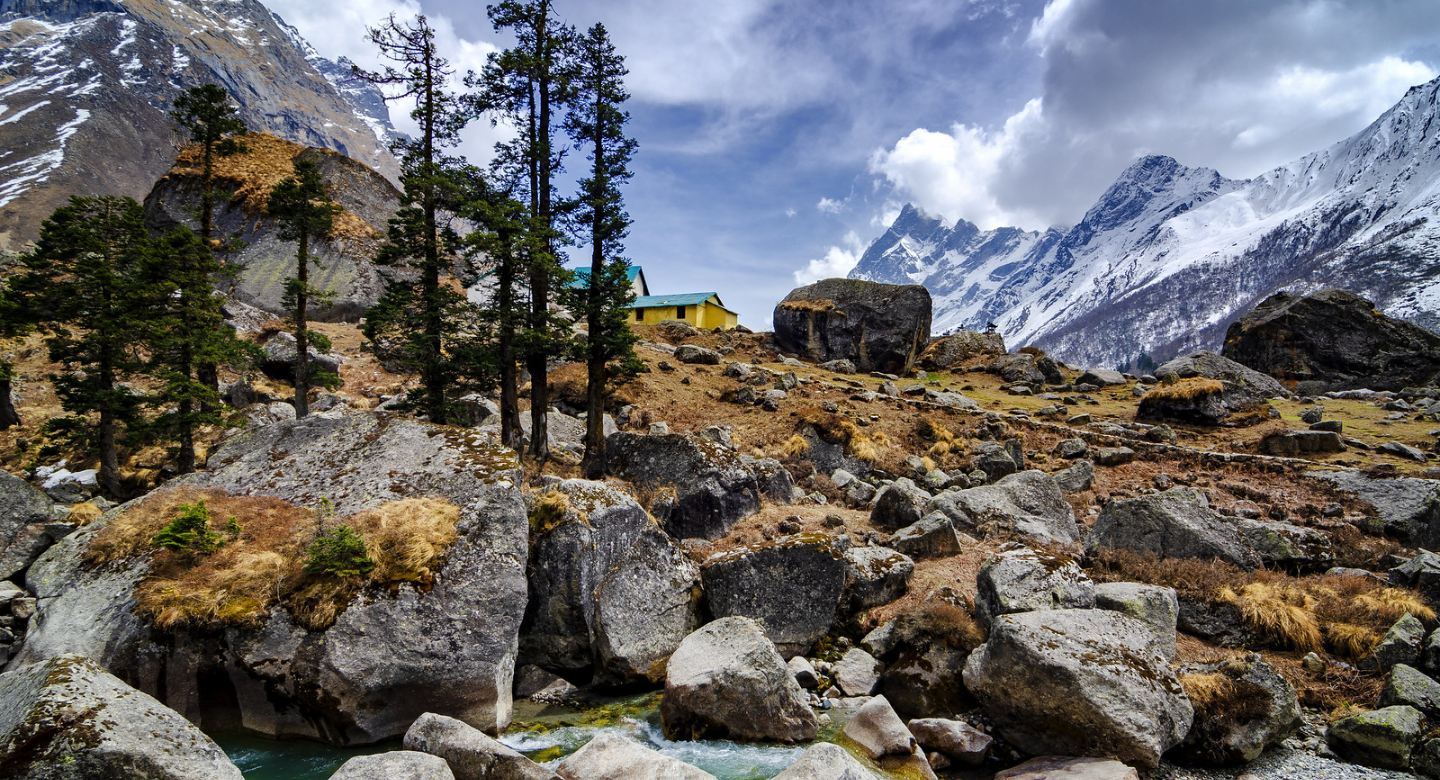
Chadar Trek
Tour snapshot
8 Days
62
11,100 ft
18+
Difficult
Overview
The Chadar Frozen River Trek is a once-in-a-lifetime adventure, where trekkers walk on the frozen Zanskar River, surrounded by surreal landscapes of ice-covered cliffs and frozen waterfalls. This unique trek, set in the heart of Ladakh, takes you through one of the most isolated regions in India, allowing you to witness Ladakh’s winter beauty in its rawest form. The experience of walking on the "Chadar" or sheet of ice, often considered the ultimate test of endurance and resilience, provides an incredible opportunity to connect with the elements and push personal limits in a breathtaking winter wonderland
Why This Trek?
Walk on a Frozen River: Experience the surreal thrill of trekking on the frozen Zanskar River, which transforms into a solid ice sheet during winter, offering an otherworldly adventure.
Stunning Frozen Landscapes: Witness breathtaking frozen waterfalls like Nerak, surreal ice formations, and snow-covered valleys that create a magical, untouched winter wonderland.
Cultural Immersion: Trek through remote villages, interact with the local Zanskari people, and gain insight into their resilient lifestyle in one of the harshest climates on Earth.
Ultimate Physical Challenge: The extreme cold and harsh environment, with temperatures dropping to -30°C (-22°F), test your endurance, making this trek a physically demanding and rewarding experience.
Exclusive Adventure: The trek is accessible only during the winter months, making it a rare and limited-access journey that offers a once-in-a-lifetime opportunity to explore the frozen Himalayas.
Included/Excluded
Select Dates
{{type.name}}
{{type.display_price}} per person
Guests
Extra prices:
- {{total_price_html}}
- {{pay_now_price_html}}
Guest in maximum
BOOK NOW Book NowItinerary for
Chadar Trek
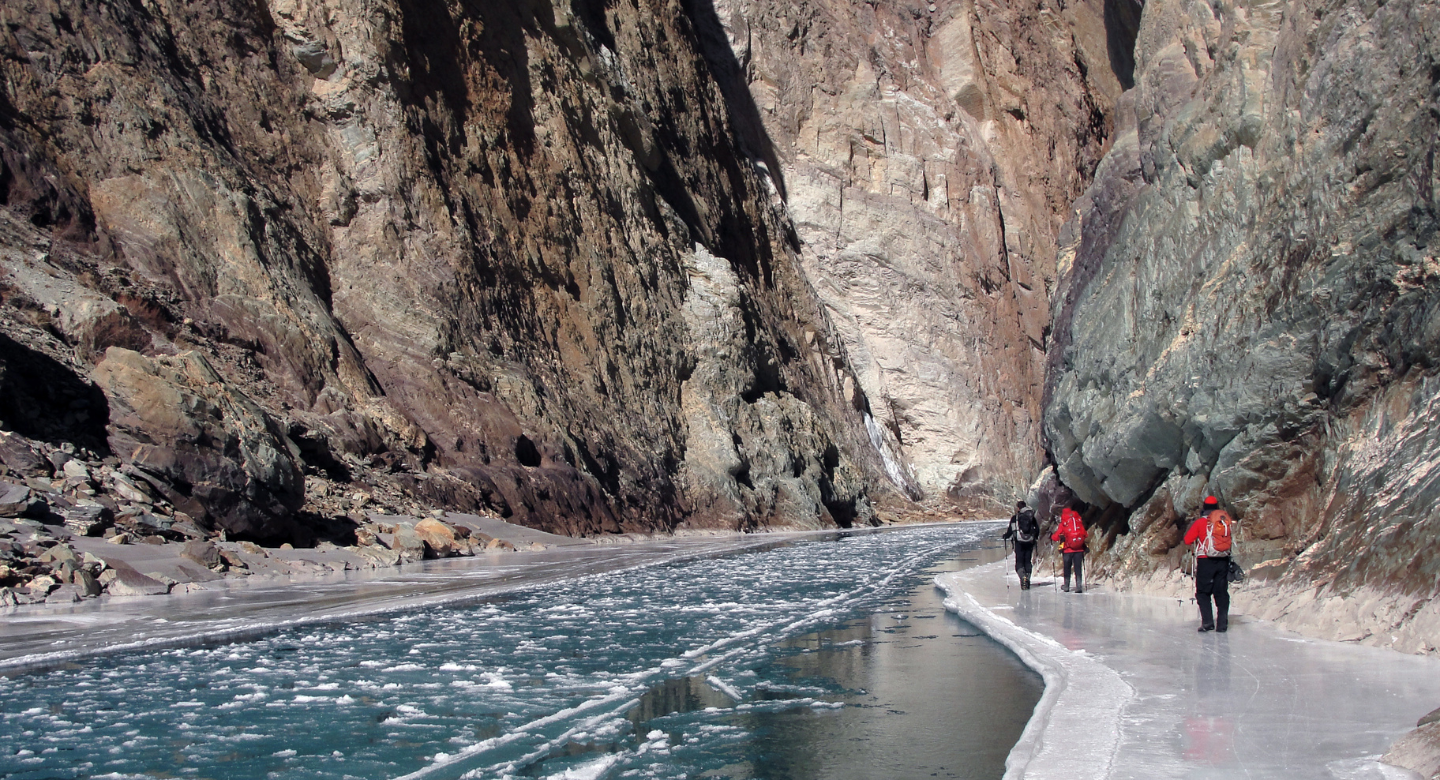
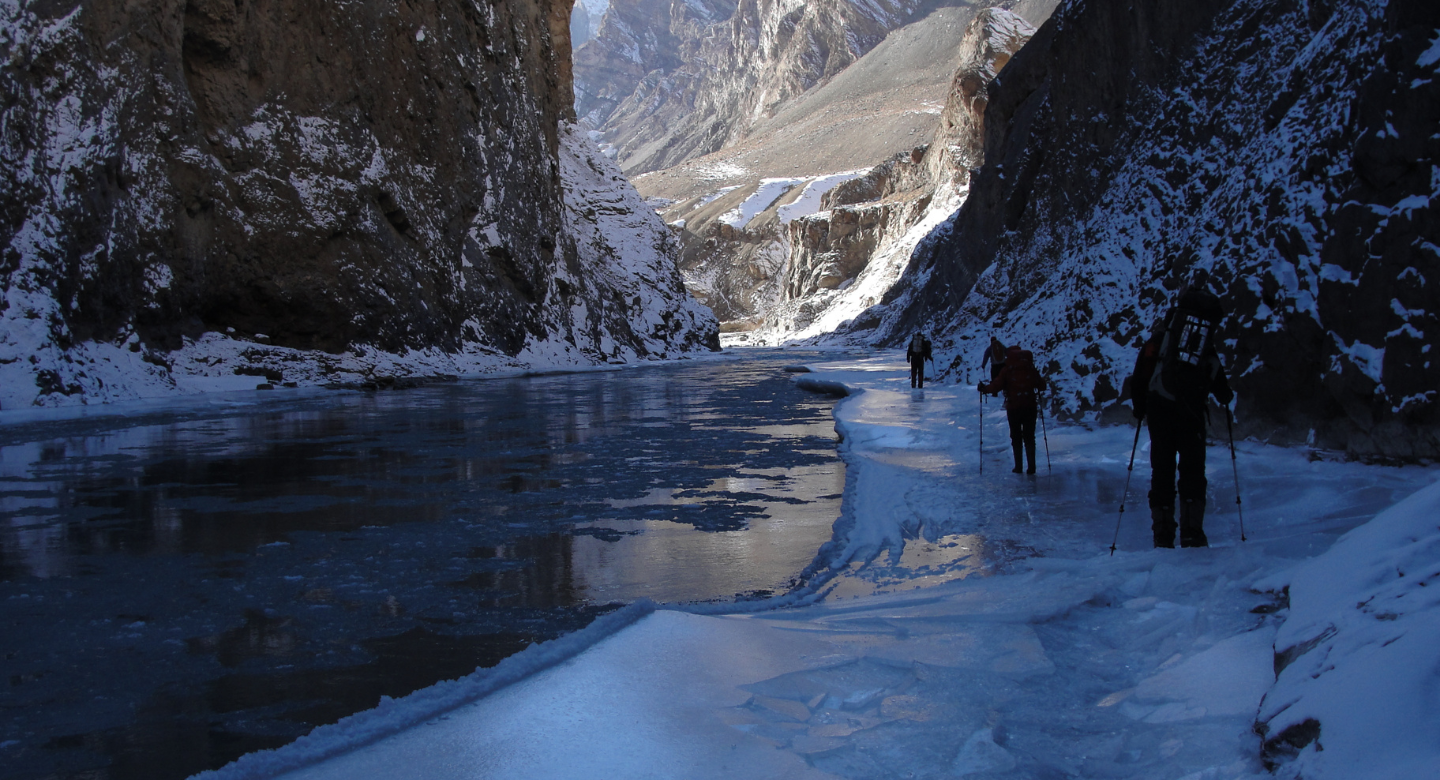
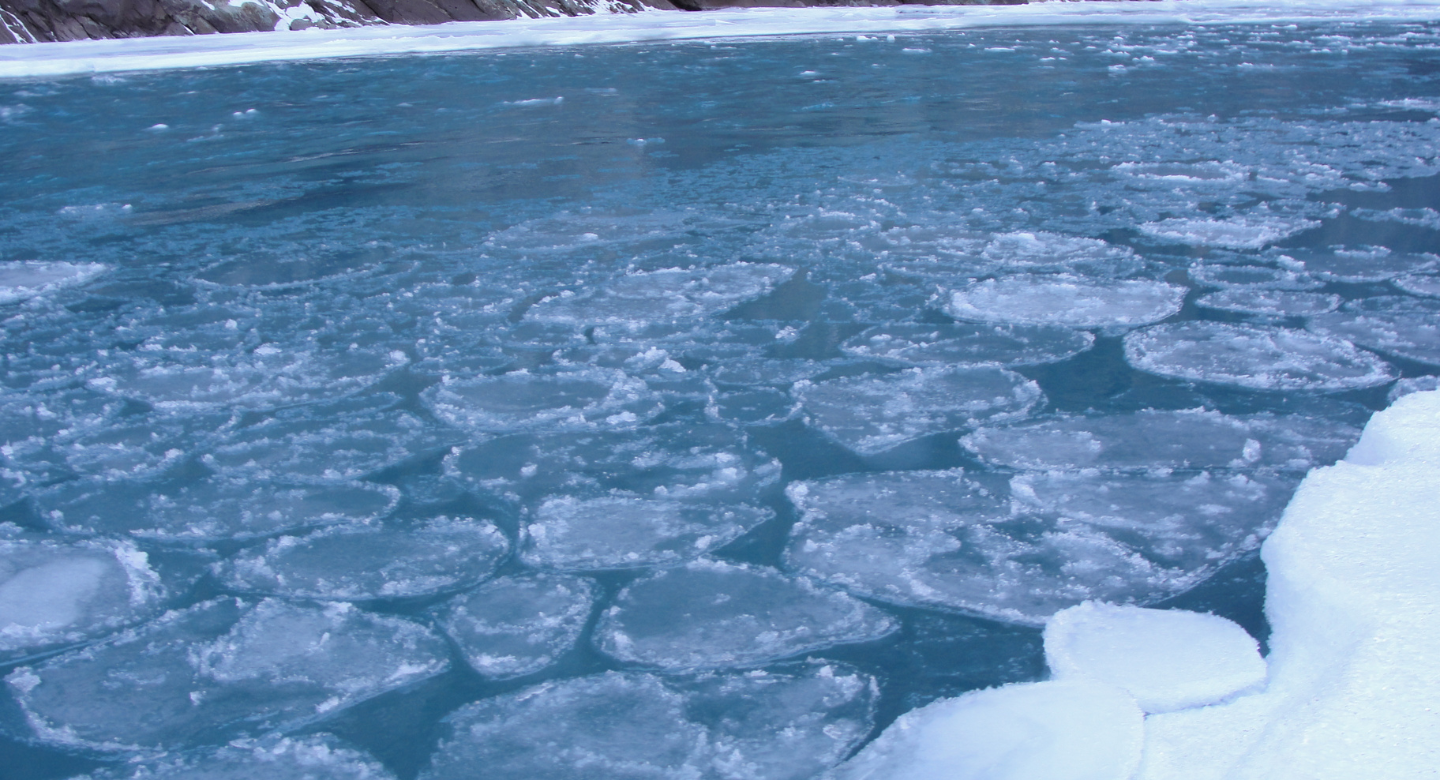
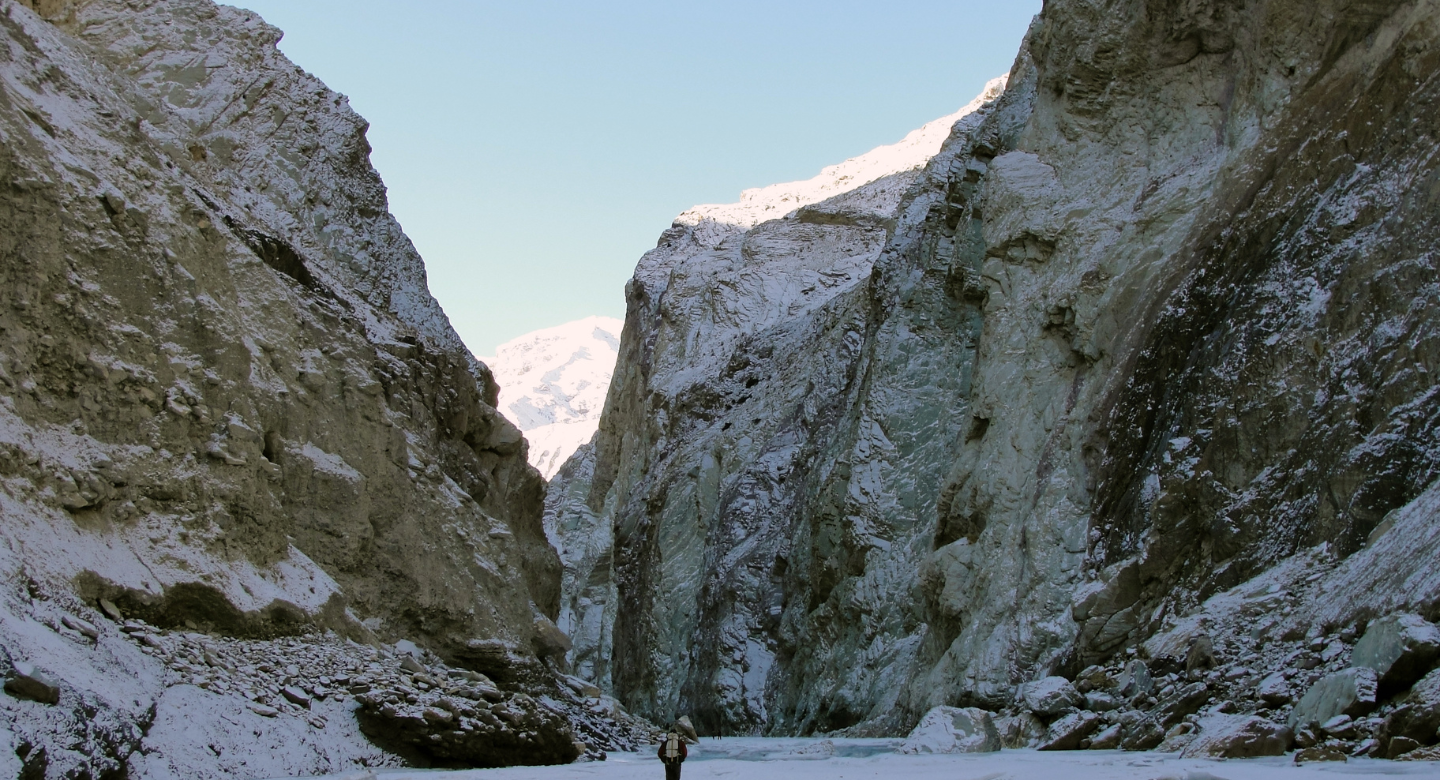
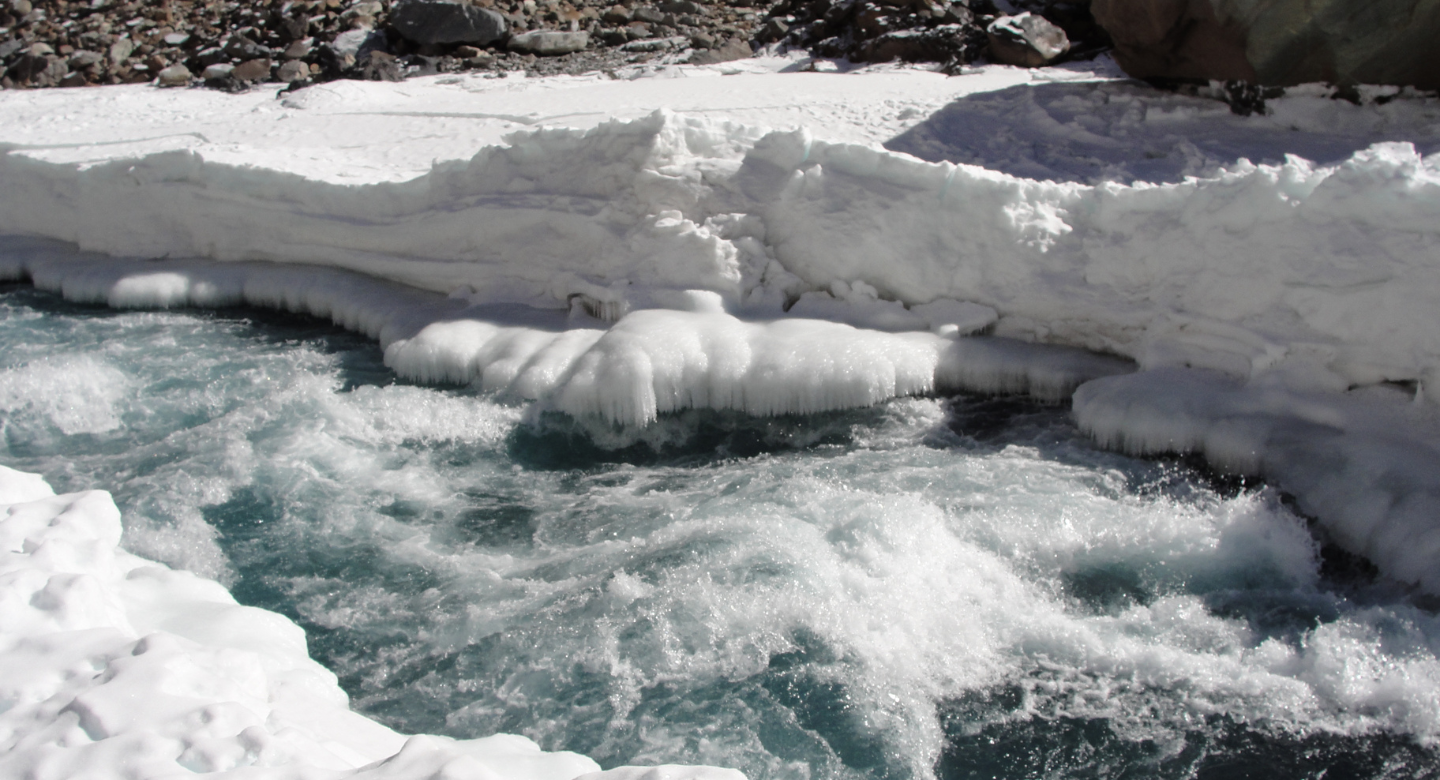

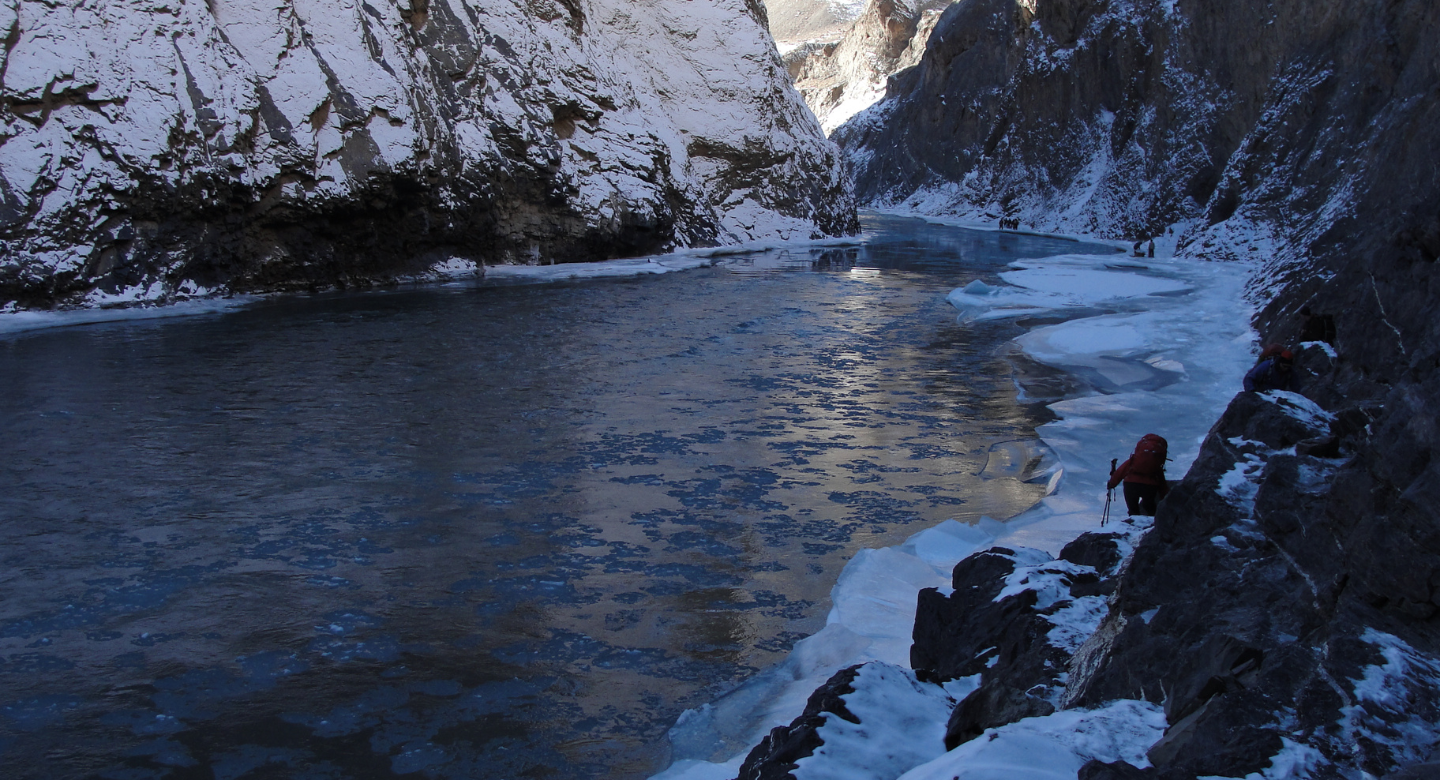
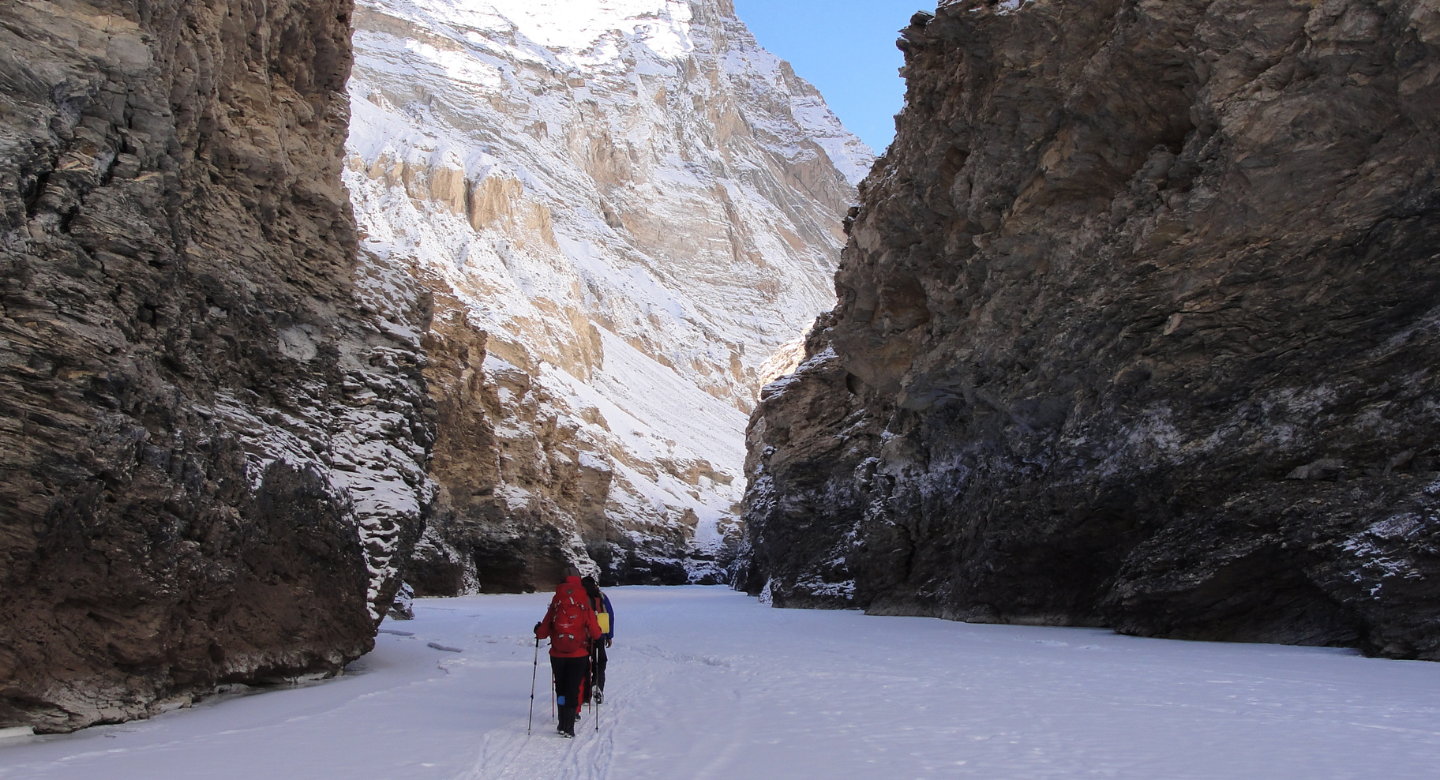
Map & Graph for
Vally of Flowers
The ideal time to undertake the Chadar Trek is between mid-January to mid-February when the Zanskar River is completely frozen, forming the stable “Chadar” or ice sheet. During this period, temperatures can drop as low as -10°C to -15°C during the day and -30°C at night, creating the perfect conditions for the trek. By March, the ice starts melting, making it dangerous to continue trekking.
By Air:
Leh’s Kushok Bakula Rimpochee Airport (IXL) is the nearest, and it is well-connected to major cities like Delhi, Mumbai, and Srinagar. Direct flights from New Delhi (the most popular route) operate frequently, and the flight duration is approximately 1.5 hours. The stunning aerial views of the snow-covered Himalayas as you approach Leh are a bonus. During the winter months, air travel is the most reliable mode of transportation due to road closures.
By Road:
Leh can be reached by two major highways, but in the winter months (from November to May), these roads are typically closed due to heavy snowfall.
-
Srinagar to Leh: This route via National Highway 1 (NH1) goes through Kargil, but it’s closed during winter.
-
Manali to Leh: Via the Manali-Leh Highway, this route also remains closed in winter due to snow-covered passes.
In summer, the JKSRTC (Jammu and Kashmir State Road Transport Corporation) and private buses operate from Srinagar and Manali to Leh. However, during the trekking season, the only feasible way to reach Leh is by air.
By Train:
The nearest major railway station is Jammu Tawi Railway Station (around 700 km from Leh), which is well-connected to major cities across India. From Jammu, you can take a bus or taxi to reach Leh, but keep in mind the roads may be closed in winter. If you plan to trek in winter, flying is the only viable option.
Itinerary








FAQs about
Chadar Trek
The best time for the Chadar Trek is between mid-January to mid-February when the Zanskar River is completely frozen, creating a solid ice sheet for trekking.
Temperatures can drop to -10°C to -15°C during the day and can go as low as -30°C at night. Proper layering and cold-weather gear are essential to withstand these conditions.
Yes, it is recommended to have prior high-altitude trekking experience and good physical fitness. The trek is physically demanding due to extreme cold and long walking hours on ice.
The trek usually spans 7 to 9 days, covering a distance of around 62 km on the frozen Zanskar River, depending on the route and conditions.
During the trek, accommodation is in campsites set up along the Zanskar River. Trekkers sleep in tents, and the sleeping arrangements are basic but include essential gear like sleeping bags rated for extreme temperatures.
Acclimatization is crucial to avoid Acute Mountain Sickness (AMS). The itinerary includes 2 days in Leh for acclimatization before the trek begins. Trekkers should hydrate well, avoid alcohol, and follow their guide's advice to minimize the risk.
The Chadar Trek is considered moderate to difficult. The primary challenges come from walking on ice, sub-zero temperatures, and the long daily trekking hours.
Key gear includes gumboots for walking on ice, thermal layers, down jackets, woolen caps, gloves, sunglasses (to avoid snow blindness), and a walking stick. Your trekking organizer typically provides tents and sleeping bags.
The Chadar Trek is generally safe if you follow the guidelines, acclimatize well, and trek with an experienced operator. However, the unpredictability of weather and ice conditions requires caution, and trekkers should be prepared for any sudden changes.
Yes, you need to obtain a permit from the Ladakh Autonomous Hill Development Council (LAHDC) to do the Chadar Trek. A medical fitness certificate from a designated government hospital in Leh is also mandatory to ensure you're fit for the trek.


